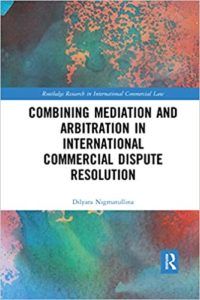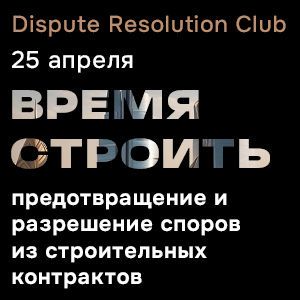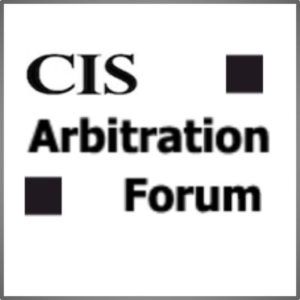The use of mediation and arbitration in combination: what does the empirical data say?
 How would you understand an expression “the use of mediation and arbitration in combination”? How exactly are mediation and arbitration combined? Are roles of a mediator and an arbitrator performed by the same neutral or not?
How would you understand an expression “the use of mediation and arbitration in combination”? How exactly are mediation and arbitration combined? Are roles of a mediator and an arbitrator performed by the same neutral or not?
These were the questions that I asked the participants of the conference New Horizons of Private Law (MGIMO University, Moscow, Russia) to think about at the beginning of my presentation on the topic of combinations.
Before delving into the discussion of the actual empirical data, I believe it is pertinent to explain what I mean by the use of mediation and arbitration in combination.
Variety of combinations
Mediation and arbitration can be combined in numerous ways. They can be used sequentially, simultaneously, and otherwise. The same or different neutrals may act as a mediator and an arbitrator. Those familiar with the literature on combinations would know that the terminology employed in relation to various combinations is inconsistent and the same term can often be attributed different meanings, which creates a lot of confusion. Examples of terms used to denote various combinations include med-arb, arb-med-arb, same neutral (arb)-med-arb, diff neutral (arb)-med-arb, arb-med, MEDALOA, co-med-arb, and shadow mediation. And these are just examples, there are many more terms and combination possibilities. What matters here is that whenever someone writes or speaks about the use of mediation and arbitration in combination, the starting point should always be an understanding what exactly the person means by such a combination.
Same neutral (arb)-med-arb
While there are many combination possibilities, the discussion among practitioners and academics still seems to revolve around one combination, the same neutral (arb)-med-arb. I use the term “the same neutral (arb)-med-arb” to refer to a combination where mediation and arbitration are used sequentially and the same neutral acts as a mediator and an arbitrator. The process may start either with mediation or with arbitration.
The same neutral (arb)-med-arb is a highly controversial combination. For supporters, it is a process that captures the independent strengths of both mediation and arbitration while limiting their weaknesses. In particular, we often praise the process for its time and cost efficiency, finality, and legal enforceability. Opponents, however, are convinced that mediation and arbitration by the same person are inherently incompatible and the process is a disaster. Caucuses appear to be the most problematic issue in the same neutral (arb)-med-arb and the cause of most concerns associated with this process. These include a concern that arbitrators may lose their impartiality because of the information that they have become aware of in mediation and especially in caucuses. Another commonly raised concern is that the inability of parties to hear and respond to the issues raised by each of them in caucuses with mediators who later become arbitrators may lead to a breach of the rules of due process.
As follows from the literature on the topic, the legal culture and, more specifically, two key factors appear to shape practitioners’ perception of the same neutral (arb)-med-arb.
The first factor is the practice of the judiciary in a particular jurisdiction. This factor is usually discussed in the context of juxtaposing the inquisitorial legal traditions of Continental Europe with the adversarial approach of the Anglo-American legal system. While in the former facilitation of settlement is often considered as a desirable part of a judge’s role, in the latter judges traditionally refrain from being actively involved in settlement facilitation due to the fear of being perceived as partial, if such active involvement does not lead to a settlement.
The second factor is the way disputes are resolved in a particular jurisdiction. This factor is often examined in the context of juxtaposing the Western world where, as it is commonly believed, preference is given to litigation with East Asian societies that are known for favouring conciliation. In many parts of East Asia, the maintenance of harmonious interpersonal relationship is a top priority, while an outright conflict means a total breakdown of the harmony and is perceived as a failure. To avoid an outright conflict, arbitrators often play an active role assisting parties in settling their dispute. In East Asia, mainland China appears to be the foremost proponent of the same neutral acting as an arbitrator and a mediator.
The above discussion of factors is based on generalisations that are necessary for the purposes of this post. I would like, however, to acknowledge that the picture of the practices of the judiciary and of ways disputes are resolved in different parts of the world is much more nuanced.
Empirical data
My empirical inquiry into the topic of combinations started in 2014, when I conducted a questionnaire as part of my PhD project at the University of Western Australia. That study involved eighty-one participants from twenty-eight jurisdictions. The results of that questionnaire (that will be discussed below) suggested the existence of a link between the practitioners’ legal culture and their use of the same neutral (arb)-med-arb. I explained them by the fact that the majority of the questionnaire participants with experience in combinations practiced in Continental Europe and common law jurisdictions in the Asia-Pacific region. Only one participant indicated, mainland China as a primary jurisdiction of practice. To further test whether there is a link between the practitioners’ legal culture and their use of the same neutral (arb)-med-arb, it appeared useful to conduct a follow-up study that would involve international dispute resolution practitioners from East Asia, in particular those who would have mainland China as their primary jurisdiction of practice.
Together with Dr. Ruohan Zhu, I conducted such study between March 2019 and January 2020. Fifty international dispute resolution practitioners from five jurisdictions completed the questionnaire. The largest group of the participants practiced in mainland China (72%).
The comparison of the results of two studies (of 2014 and 2019-2020) demonstrates that the participants of the second study have experienced combinations (understood broadly, as encompassing all combination possibilities) more frequently than the participants of the first study.
online pharmacy https://shop.fargoderm.com/wp-content/themes/twentysixteen/inc/new/temovate.html no prescription drugstore
In particular, 58% of the participants of the second study reported having been professionally involved in the use of combinations, while in the first study that was the case for 35% of the participants.
online pharmacy https://shop.fargoderm.com/wp-content/themes/twentysixteen/inc/new/levaquin.html no prescription drugstore
Also, the participants of the second study reported experience acting as mediators and arbitrators in the same dispute more often compared to the participants of the first study. Among the participants of the second study with experience in combinations, 35% acted as dual role neutrals. In the first study, only 18% of the participants with experience in combinations reported having performed both roles in the same dispute.
In both studies, the participants pinned down the most common combination. For the participants of the first study that was a combination where different neutrals acted as mediators and arbitrators. According to the participants of the second study, that was a variation of the same neutral (arb)-med-arb – a combination where a member of the arbitral tribunal acted as a mediator. The practitioners from mainland China mostly selected this option. Notably, compared to mediation by the sole arbitrator, mediation by only some members of a tribunal can reduce concerns associated with the same neutral (arb)-med-arb, particularly those related to the risk of arbitrator partiality.
Interestingly, in both studies, a vast majority of the participants reported the use of caucuses in the mediation stage of a combination in all or most cases. This result was predictable in the context of the first study where most often the participants had experienced a combination where different neutrals acted as mediators and arbitrators and in those circumstances, caucuses rarely raise any concerns. They are, however, problematic in the context of the same neutral (arb)-med-arb. Nevertheless, the results of the second study align with the results of the previous empirical studies and demonstrate that practitioners from mainland China often engage in caucusing during mediation in the course of the same neutral (arb)-med-arb.
online pharmacy https://shop.fargoderm.com/wp-content/themes/twentysixteen/inc/new/nolvadex.html no prescription drugstore
Conclusion
Overall, the results of both studies support the existence of a link between the practitioners’ legal culture and their use of the same neutral (arb)-med-arb.
If you would like to learn more about combinations, please read my book “Combining Mediation and Arbitration in International Commercial Dispute Resolution”.











